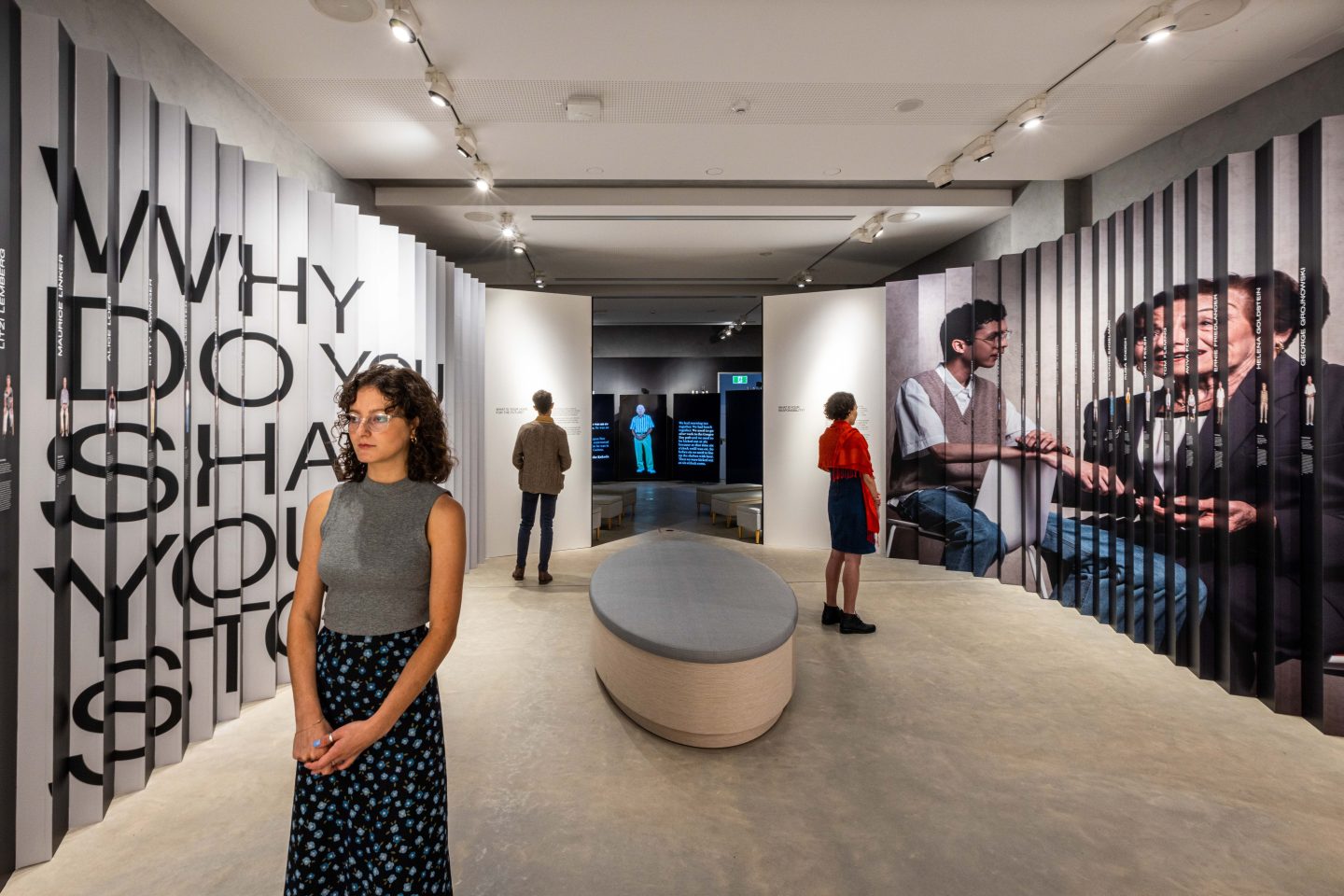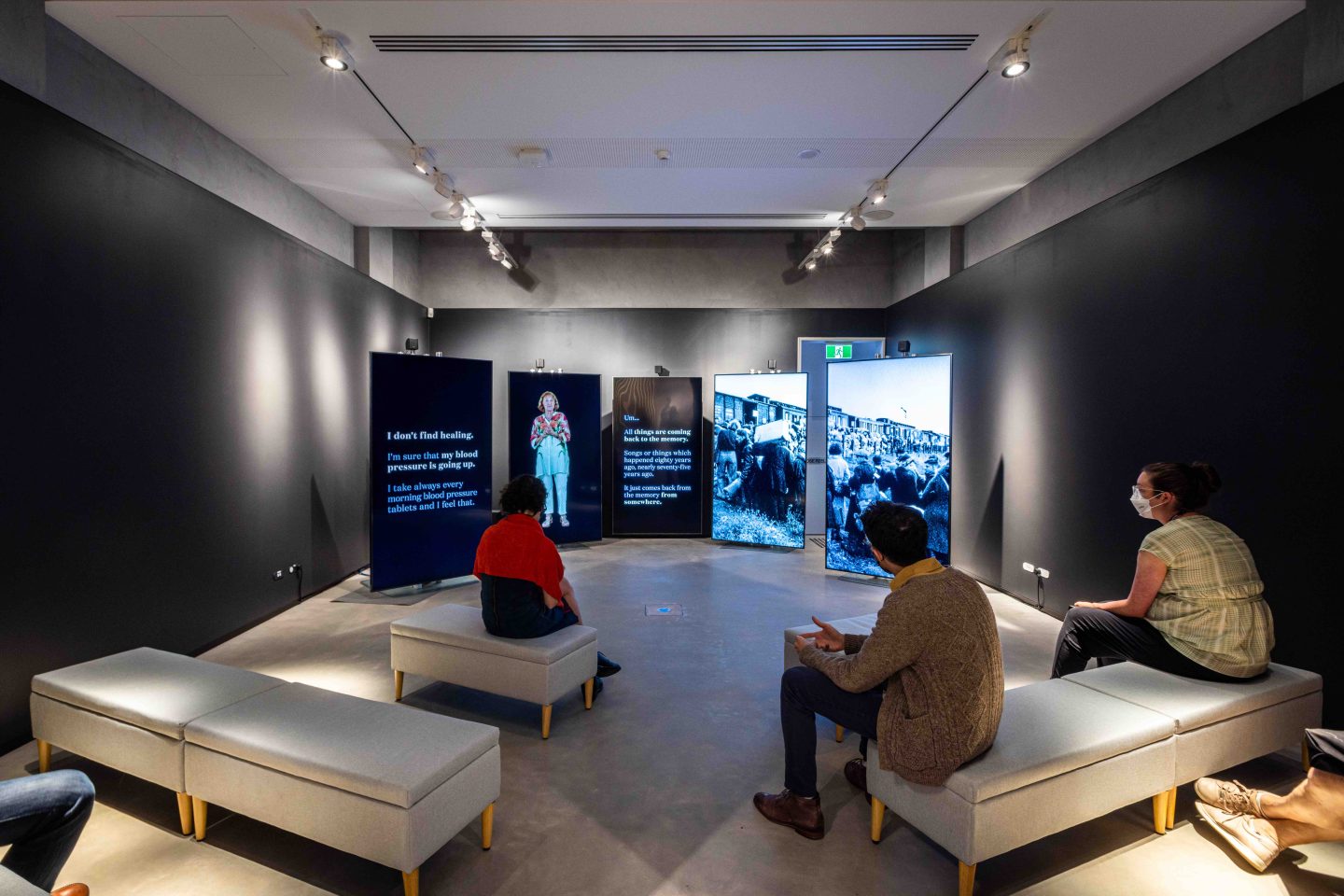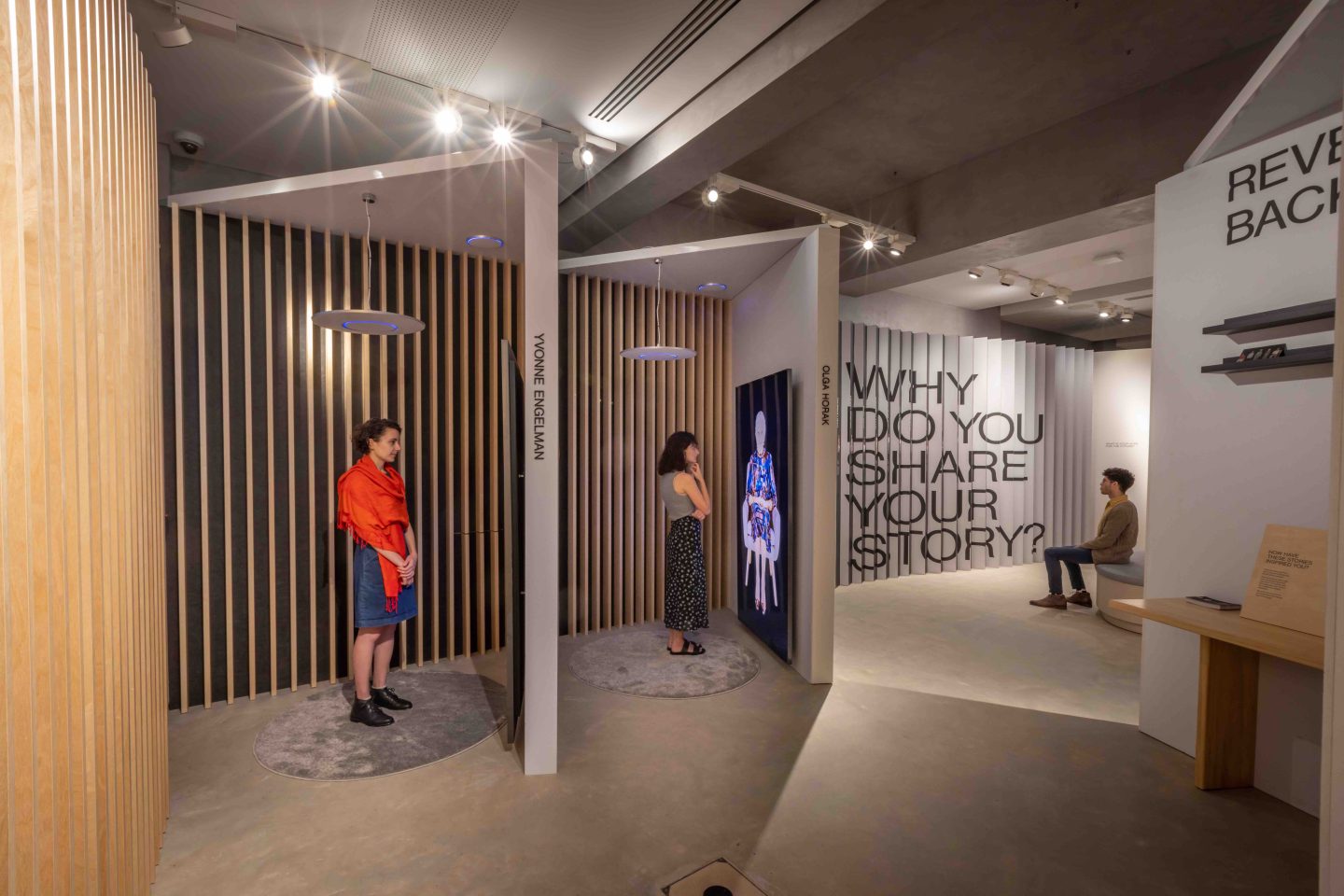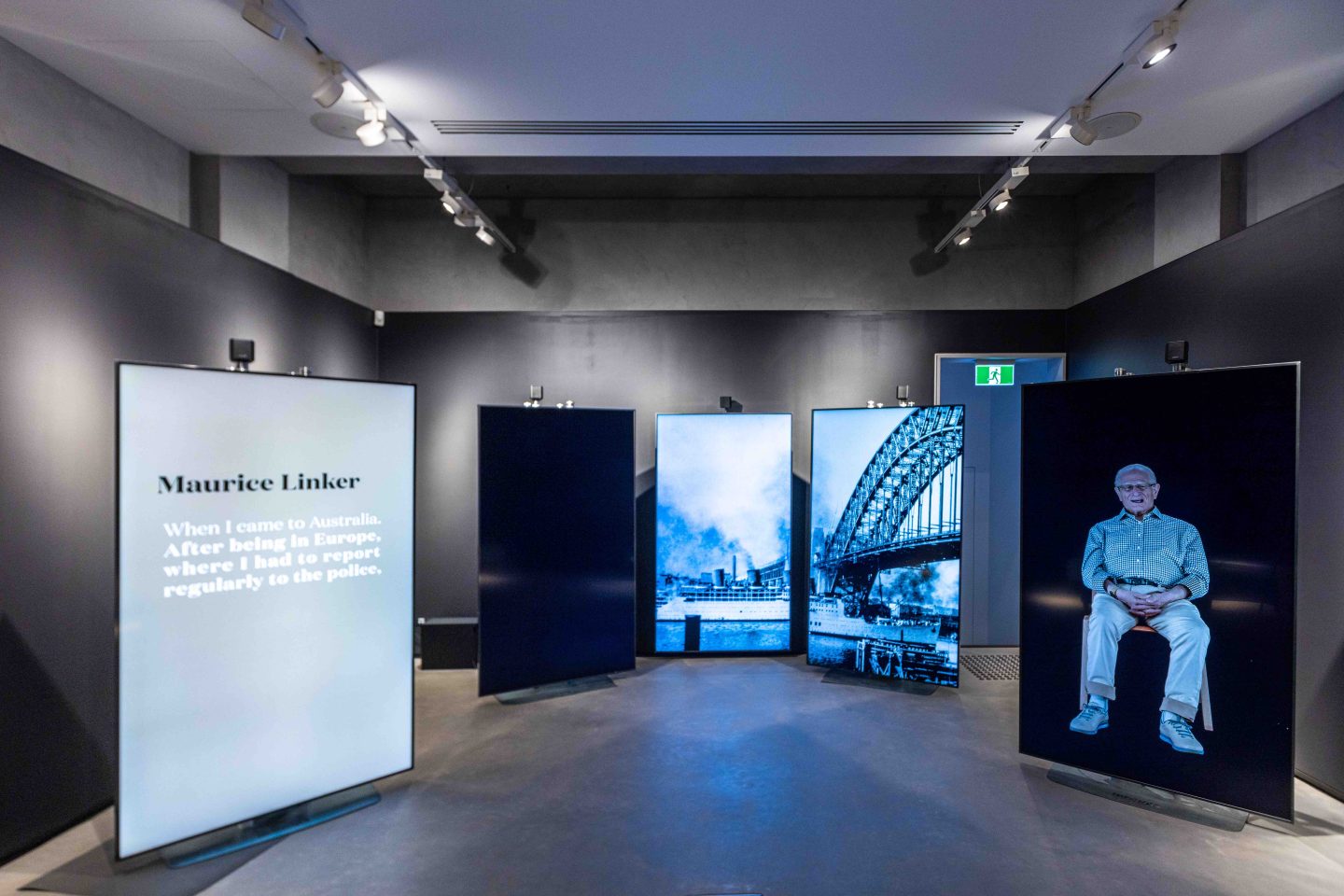Reverberations
A new exhibition that shows how testimony reverberates within individuals, amongst communities, and across generations.
Overview
Testimony is an important source for learning the history of the Holocaust. It shapes historical narratives of European Jewish life before, during, and after the Holocaust. Testimony is a way to ensure people and their stories are placed before statistics. Our exhibit features survivors telling their stories in their own words, giving them authority over their own narratives, holding perpetrators to account and defying those who have tried to deny the veracity of their stories and the Holocaust itself.
Partners
Sydney Jewish Museum, USC Shoah Foundation
Services
Exhibit Design, Media Design
The Details

Exhibit Introduction
The exhibit begins by introducing two foundational elements. “What is Testimony?” explains the central role of testimony for learning about the Holocaust. “Holocaust History and Memory” explains the distinction between History and Memory, and their interconnection. The hallway is lined with survivors’ family photographs interspersed with interview questions.
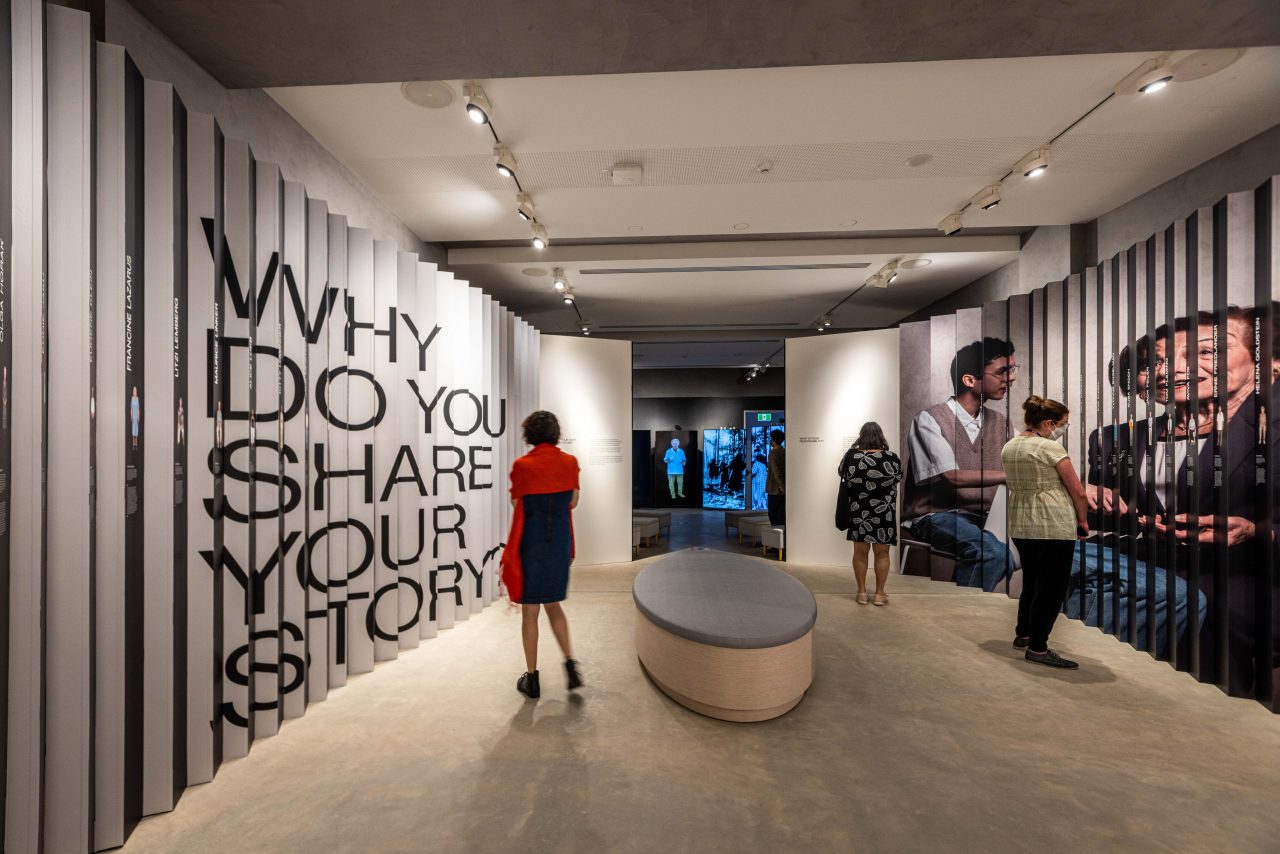
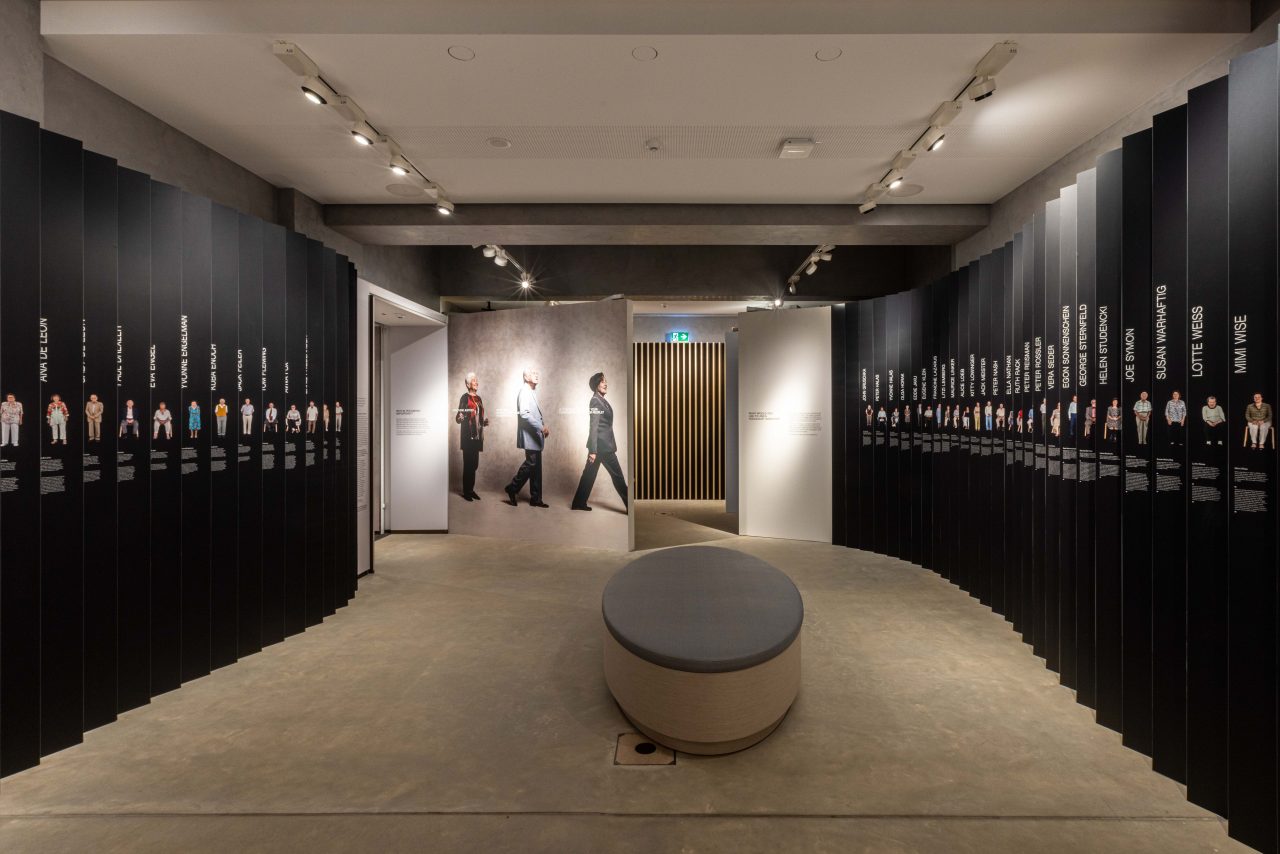
Why Do You Share Your Story?
Within the exhibit’s core, lenticular walls visualize the notion of reverberation. From one perspective, the lenticular wall reads “Why Do You Share Your Story?” in large graphic print. The west lenticular wall shows a photograph of a survivor sharing their story with an audience.
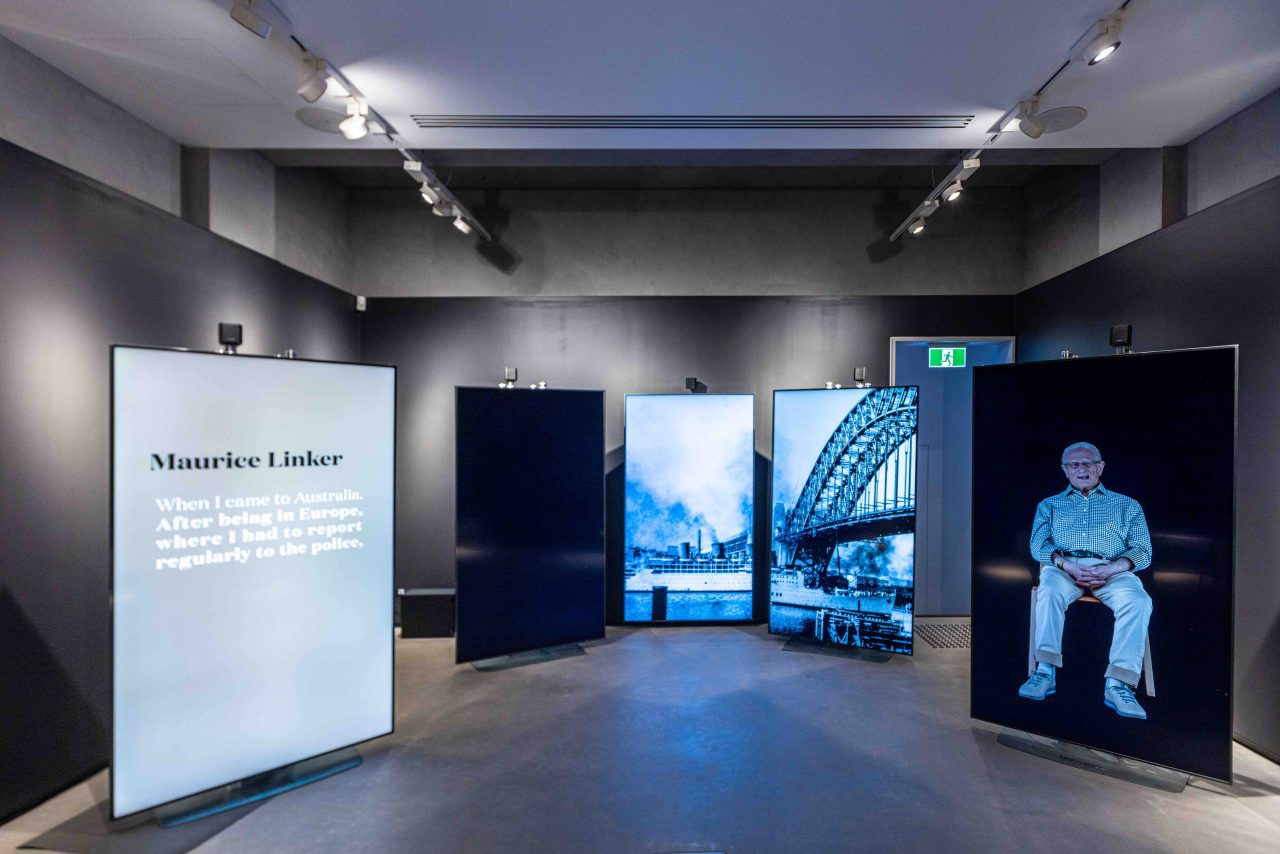
Collective Testimony
Towards the rear of the exhibit, a media piece weaves together film, voice, and text from testimonies, along with historic images - including survivors’ personal photographs.
Testimonies are edited thematically according to the interview questions. Survivors appear alone or in groups of 2-3 on separate screens as they share their individual stories. Taken together, these diverse experiences and perspectives create the foundation of past, present, and future understanding of the Holocaust.
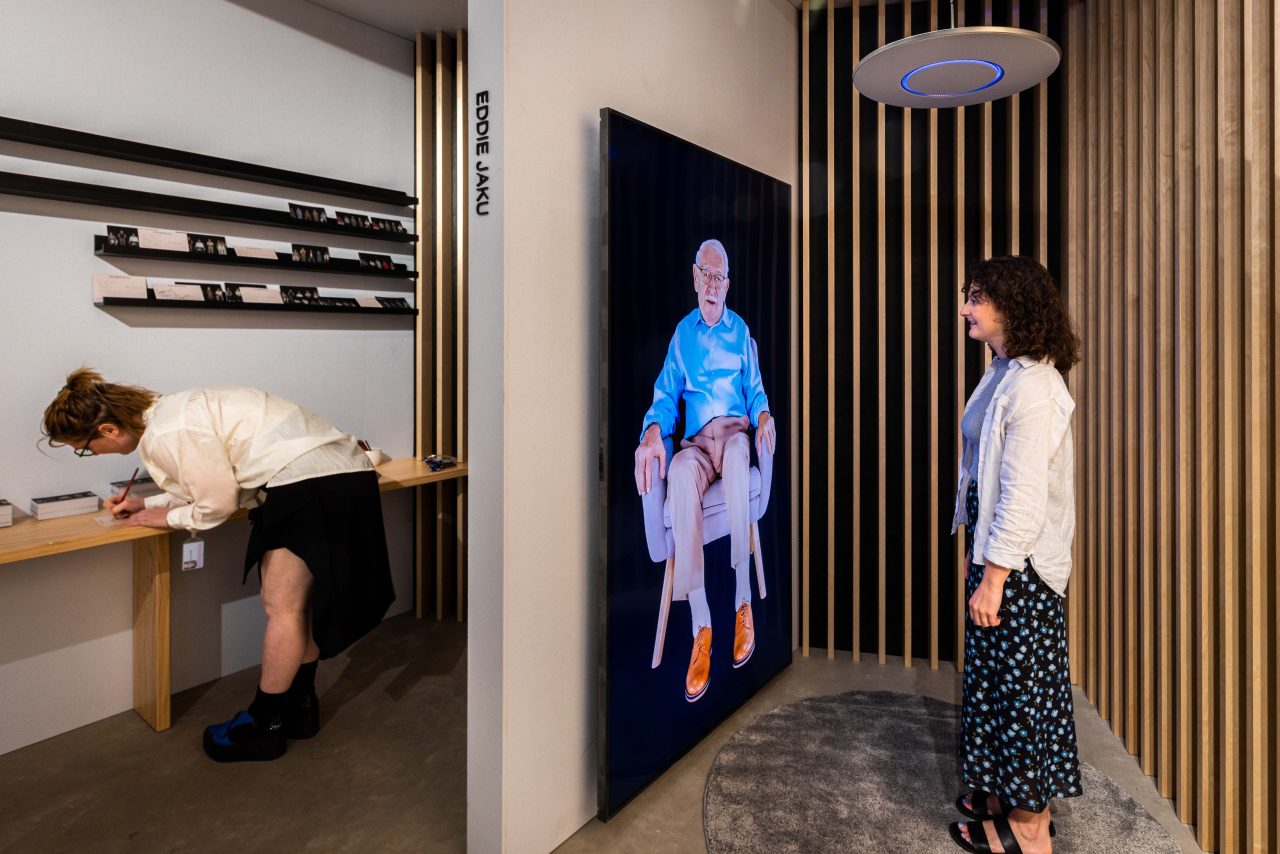
Dimensions in Testimony & Reflection
The technology behind Dimensions in Testimony, developed by the USC Shoah Foundation, allows visitors to become oral historians as well as actively engaged listeners, as they ask direct questions to survivors. Voice recognition technology serves pre-recorded answers according to the question being asked.
An additional, voluntary contribution exercise is included where visitors are invited to write notes addressed directly to survivors and/or their families about the personal impact of their testimonies.
